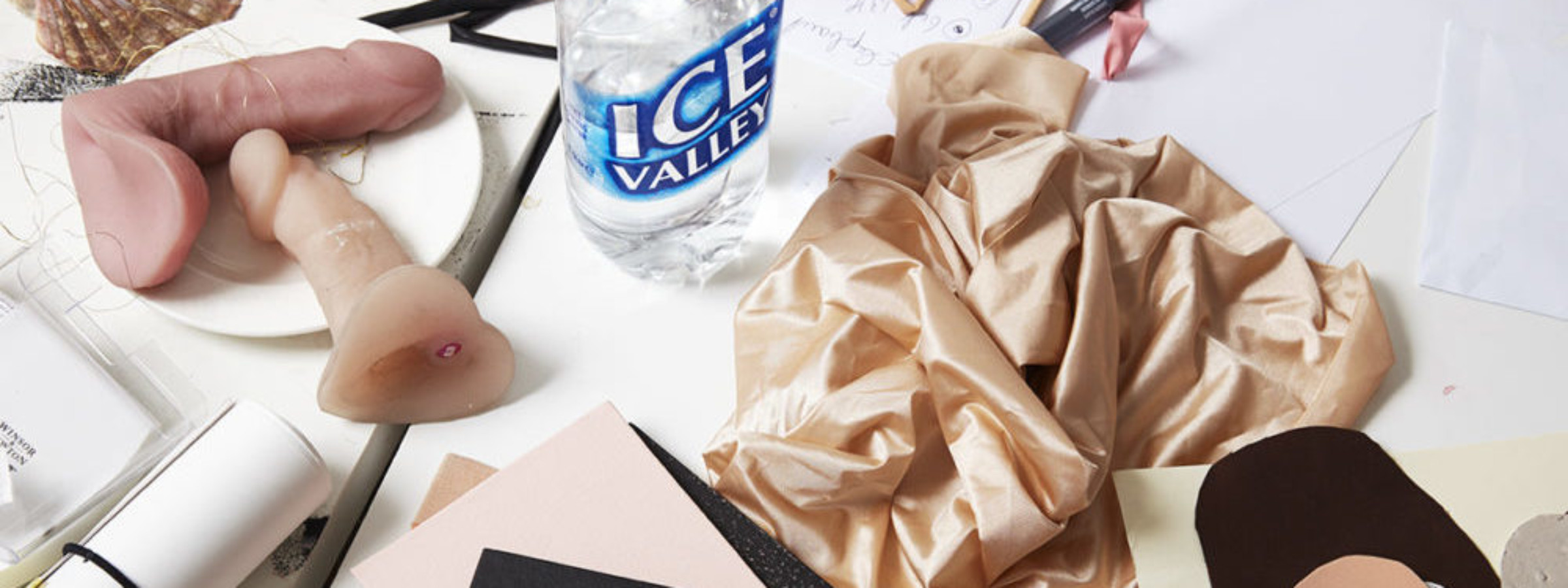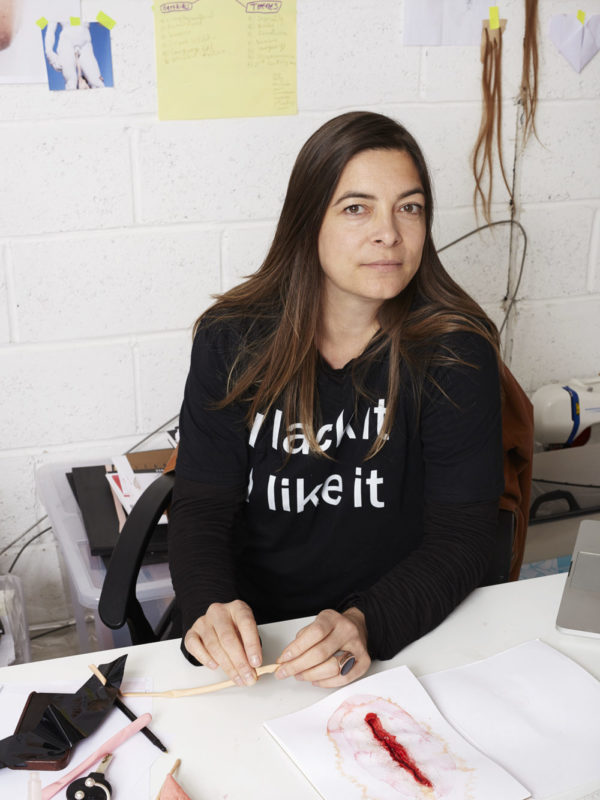
It was a piece that immediately stood out to me at Goldsmiths’s consistently high-quality show, not just because I have a juvenile magnetism to phallic art (which, I do) but because it offered an interesting take on the reversal of the male gaze. At the moment, there is a tremendous and very well-needed wave of female artists addressing the male gaze by presenting their own and fellow female bodies in a manner that feels entirely fresh. It is less common to see female artists tackling the male body and really pulling apart what it means. Berthon-Moine’s work has an irreverent, disembodying nature to it that calls to mind the treatment of the female body by artists such as Louise Bourgious and Sarah Lucas. It’s an aesthetic that we know well, but it’s nearly always female. As the artist tells me when we meet at her North West London studio, men must look at themselves now more than ever.
You began as a photographer but your final Goldsmiths MFA show was mostly made up of sculpture. Did you feel you wanted to switch to sculpture as you began your masters or was it quite a natural progression?
It was a very long and slow process, even at the first group crit I was still putting rectangular things flat on the wall. It was still photography. After that I began to play with occupying the space. It’s a different way when you come from photography. A different way of managing the space.
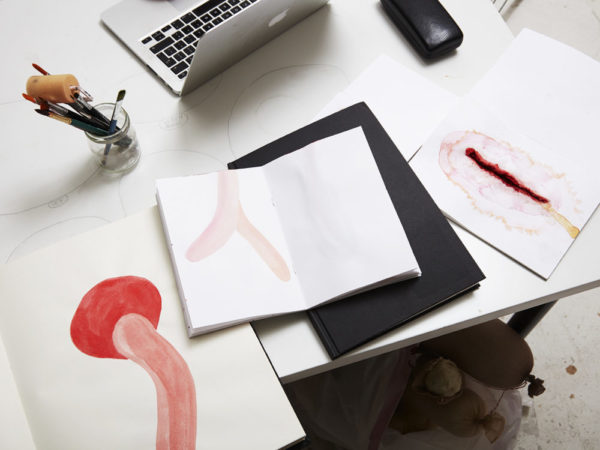
Was there a particular project that prompted the switch?
There was a project that took up the second year of Goldsmiths, it was looking at the inside of flesh lights, you know them?
Yes, I saw them in Tokyo! They had a whole floor in one sex shop devoted to them.
I made a massive, massive sculpture of the inside of one and blew it up to transform the negative space into positive and also to make it totemic and phallic when it is supposed to be the inside of a woman. They didn’t like it, they said it wasn’t good enough, there was something missing, the sexual elements, the flesh. They were right though! They were very white so they looked a bit like a Brancusi, it was a bit modern. But that was really the moment.
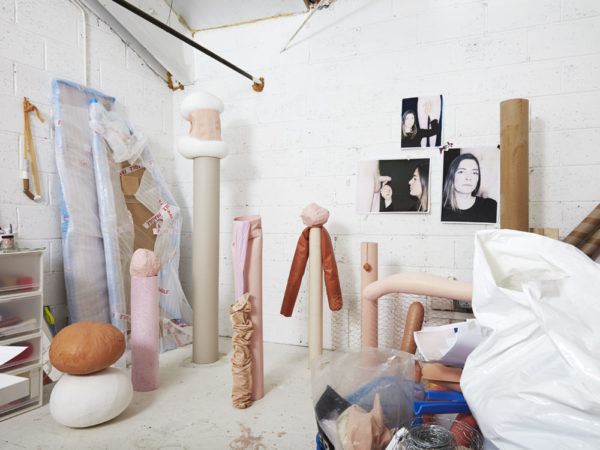
Had you already been observing at the body a lot at that point?
My point of departure is the body and I have done a lot of things with it. It’s a huge place to observe.
Your final show really focussed on the male body…
At the beginning, I looked at the female when I did the bloody lips (Red is the Colour
, 2009)–it was very female. After that I did the v-necks (V, 2010) with the hairy chests where I mixed both genders and now I’m much more into the male body.
“Sometimes I’ll be in the street and I’ll force myself to look at the male body and be very critical and after a while, I just feel nauseous about being so critical.”
It’s interesting because so many feminist artists look at the female body and the reversal of the male gaze. We’re very used to women looking at women. It feels more unusual to have a female artist addressing the male body in this quite irreverent and detached way.
To paraphrase John Berger, women look at themselves being looked at by men. I look at men in the same way that they look at women. Sometimes I’ll be in the street and I’ll force myself to look at the male body and be very critical and after a while, I just feel nauseous about being so critical. I guess also my first question is what it is to have a little bit of flaccid flesh between your legs and how it gives you so much power and so much exposure. I know that is a very simplistic question, but I think it’s important.
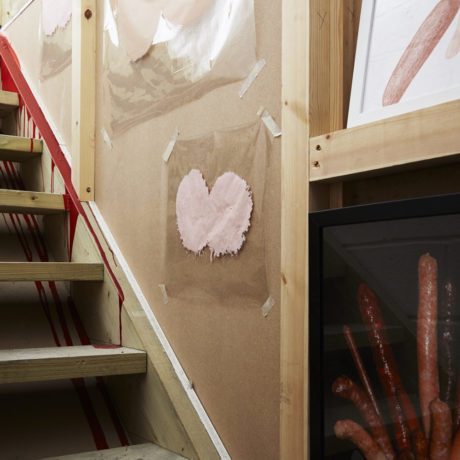
Even the feeling of invading someone or being invaded as well. Obviously, it’s pleasure for both people but when you’re letting some in I imagine it’s a completely different feeling to having an appendage.
That’s what I have been writing about as well. Heterosexual men, for them being penetrated is the biggest taboo. I think it is one of the last taboos with the male body. There is this kind of metaphor of being penetrated as well as what it means physically. For me, metaphorically, we are all being fucked up by the economy, by capitalism, that’s what it is now. But also physically they are missing the pleasure and I think it gives more compassion and understanding of your body. For me, my body is like my house, and you only let good friends into your house. Who you like, who you think can respect you.
Do you feel it is specifically the heterosexual male body that you’re looking at then?
Yes. Because I think gay men—and minorities—have done their self-reflections, they have looked at themselves, they have done the work of deconstruction (Who am I?) in order to offer a new construction of belonging to a minority community.
I imagine your degree show work could feel quite confronting—we’re not nearly as used to seeing the naked male body.
The only penis that is allowed to be shown, or more precisely represented, is on the internet and it’s the big erected one. What I showed is the flaccid penis. I think that’s a bit challenging.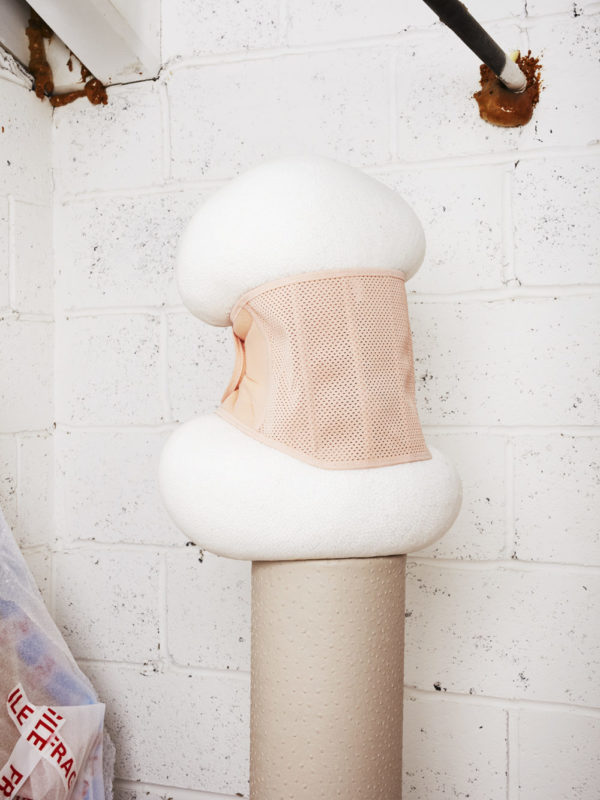
Your sculptures are quite abstracted (they aren’t graphic)—do you work from images or start from a very general shape and material?
I start with drawing. I do lots of drawing. The 2D playing around then gives me some ideas of shape and movement. After that, I start finding the materials. I love going to the fabric shops. I always go for fleshy colours and whatever I find dictates it. It’s fleshy but it’s also very plasticky. I think we are in between the body sensation but also the plastic toys, sex toys.
In a similar way to sex toys, your sculptures depict the detached organ, isolated from a person.
It’s disembodied now. A penis is a floating object on a screen. That’s what it’s become. The porn industry is led by men, for men, who have managed to detach their own penis. To emasculate themselves from their own body. It reminds me of the film Shame, I really love this film. It’s this crazy sex but as soon as there’s an emotional connection he can’t get it up.
As well as the contemporary status of the male body, you’ve also looked at art historical references—the most obvious example is yourMarbles (2013) series where you photographed testicles on marble statues.
You need to look back as well. I read about the Greeks and the perfect male body, which you can still see in advertising for men. It is the same bullshit. The Greeks are the canons for this kind of perfect body but men have to look at themselves more now because they are being looked at more and more by the capitalist gaze. I found out recently that there is a deodorant for sticky balls. You know, when they start going into places that you wouldn’t think of! They start creating new needs and they are very good at that to make money. Men have this as well now.
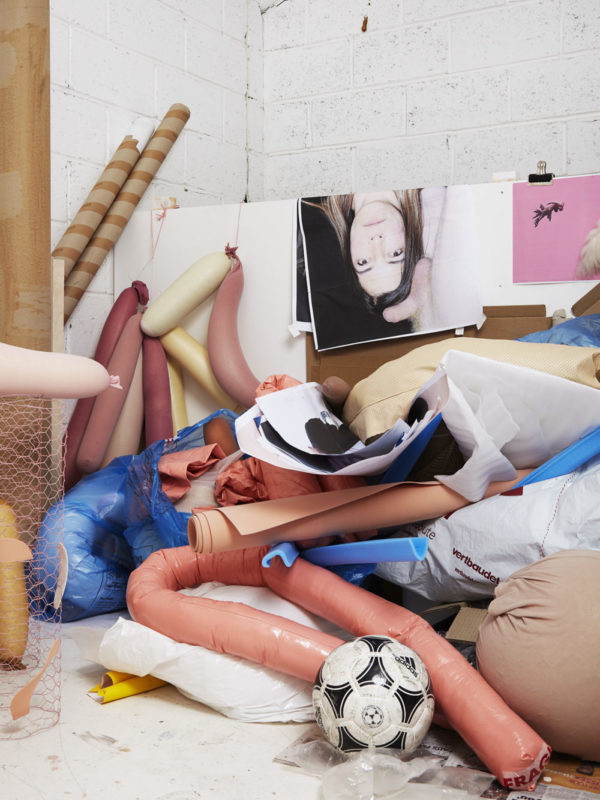
Are there any male artists who you think have a really interesting take on the male body?
Mapplethorpe, a bit. Vito Acconci in the seventies when he was hiding his testicles. It’s been done in the seventies a lot but I think every generation needs to look at itself. I did the bloody lips for example because I needed to know what it was to be a woman. Once I made the project I felt OK. I was at ease.
Has your most recent work been a personal exploration for you as well?
I think it always is. It’s things I see or live on a daily basis. I don’t think it’s super personal but they are certainly personal questions. I’m French and I come from a language that is gendered. A mug for me is a male. A mobile is masculine. Already your brain is set up. Grammatically, the masculine always overcomes the feminine when there are plurals. From a very young age, you are learning this.
It’s examples like that that seem inconsequential if you haven’t had to think about it too much as well. We take it as a given rather than something that could be different.
It’s the same as penetration—but everybody has an asshole. Paul Preciado develops that in his Contra-sexual manifesto: relocating the centre of pleasure. Also, you have the much younger generation and I really observe them and I am very curious. It is very very interesting. They are very at ease. I was reading that 50% of the millennials will be bisexual. It seems like it’s a bit easier now.
Photographs © Tim Smyth
